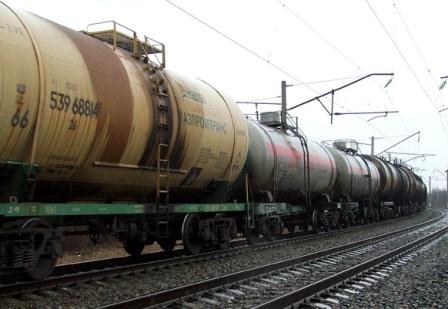


ArmInfo. The import of petroleum products to Armenia in quantitative terms declined by 10.2% per annum in the first half of 2017 (against growth of 9.3% a year earlier), making 134.1 thousand tons, while increasing in value terms by 3.1% - to $ 93.3 million (against a decline of 8% a year earlier). The Customs Service of Armenia reports.
According to the source, in the reporting period, the export of oil products experienced significant growth against a sharp decline a year earlier. The volume of exports from 2.5 kg in the first half of 2016 sharply jumped to 307,384 kg for the same period in 2017 due to which the customs value also increased. Thus, the according to RA CS data, in value terms, the export of oil products from $ 0.1 thousand increased to $ 155.8 thousand.
During the reporting period, oil products were mainly imported from Russia (75.3%), as well as from Greece (8.7%), Japan (6.5%) and Bulgaria (6%). As for the export of oil products, 98% of deliveries came from Iran, whereas last year IRI did not appear in the report of the CS of the Republic of Armenia, and the rest was exported to Bulgaria.
Analysts of Russian investment companies and banks lowered their forecast for the price of oil in 2017 to $ 52 per barrel, expect the price to increase by the end of the year from the OPEC + deal. The previous consensus forecast for the price of oil at the beginning of the year was $ 54 per barrel. Analysts note that they revised their forecasts in connection with the restoration of production in Libya and Nigeria, which were freed from the reduction in oil production and are now actively increasing it. According to the OPEC report, in June production in Libya grew by 17.5%, to 852 thousand b/s, in Nigeria - by almost 6% - to 1.733 million b/s.
According to international exchanges on August 25, oil prices for benchmarks vary in different directions: the cost of the October futures for Brent crude on the London stock exchange ICE Futures by 15:55 Moscow time rose by $ 0.24 (0.46%) - to $ 52.65 per barrel. The price of the WTI futures contract for October in the electronic trading of the New York Mercantile Exchange (NYMEX) decreased by $ 0.24 (0.50%) to $ 47.63 per barrel by that time. During the trades, the price difference between Brent and WTI reached a maximum in 2 years.
Due to the hurricane Harvey on Friday, on the Gulf Coast of the United States, the Petroleum Processing Plant was shut down with an aggregate capacity of 2.26 million barrels per day, or about 12% of all processing capacity in the country. Thus, the demand for US crude oil WTI declined, and for oil Brent, used by European refineries, has grown. In addition, in Libya, armed groups gained control over the oil pipelines supplying fuel from two deposits - El Feel and Hamada. In both fields, a force majeure was declared, production at the first was suspended, at the second - it would be discontinued later - on Monday. the production at the ash-Sharara field, the largest in Libya, has not yet been restored.